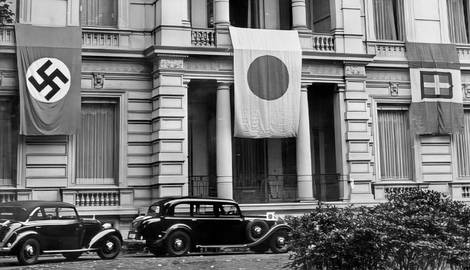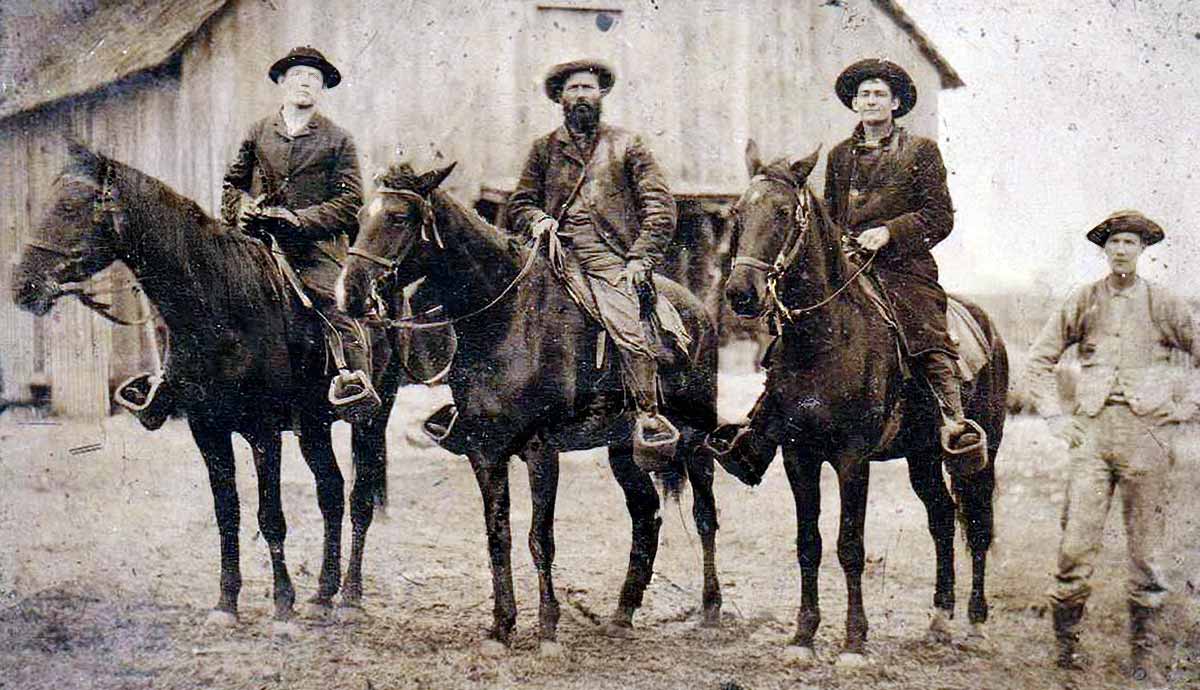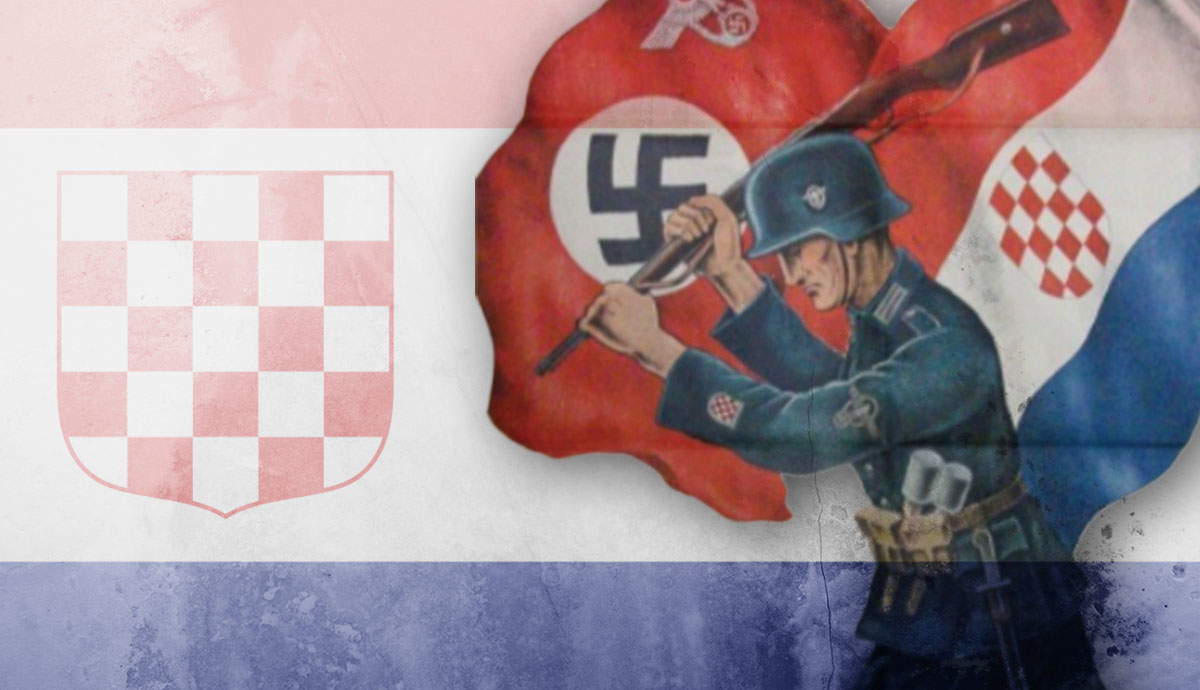
The World War 2 Axis Powers were a military coalition led by Nazi Germany, Fascist Italy, and Imperial Japan. The term originated from Mussolini’s statement that the world would “rotate on the Rome-Berlin axis.” In an eerie repeat of WWI, the three countries signed an agreement, the Tripartite Pact, in September 1940. Each recognized the other’s sphere of interest and would come to each other’s aid if attacked. Created to deter the US from entering WWII, the pact was ultimately unsuccessful. Indeed, in 1945, the Allies would defeat all three Axis Powers.
The First Axis Powers

The first Axis Powers were Germany, Italy, and Japan. Yugoslavia, Slovakia, Hungary, Romania, Croatia, and Bulgaria joined later. In 1936, Germany and Japan had already formed the so-called Anti-Comintern Pact. A year later, Mussolini joined the alliance. Then, on September 27, 1940, representatives of Nazi Germany, Fascist Italy, and Imperial Japan met in Berlin to sign the Tripartite Pact.
World War II was now a year old, and the Axis Powers seemed set to achieve a quick victory. Germany controlled Western Europe and Poland and isolated England. Italy ruled Albania, parts of France, Ethiopia, and Libya. Japan’s reach now included Korea, Manchuria, swathes of China, and many Pacific Rim islands.
Japan’s Strategy as an Axis Power

Despite the Axis successes, by 1940 Japan felt particularly vulnerable, particularly about raw materials, specifically oil and steel. Japan imported nearly all of its oil, with the US and Britain being their biggest suppliers. American embargoes had begun to affect the empire’s expansion plans. Japan’s Imperial Navy especially felt the squeeze, knowing Japan had only two years’ worth of oil reserves.
Japan knew the Dutch East Indies’ oil supplies were vulnerable because of the Nazi’s occupation of Holland. With Britain in peril, the whole of Southeast Asia was also exposed. By joining the Axis, the agreement kept Germany from claiming Asian colonies. Japan’s primary aim was deterring the Americans.

The Axis agreement gave Imperial Japan free rein in Asia and the Pacific as their “zone of interest.” Then, Japan started to revise its war plans, mainly against the United States. Eventually, the Japanese realized that meant invading the Philippines and attacking Pearl Harbor. To achieve those goals, Japan knew eliminating the Philippines as an American base would protect their shipping lanes. And the Imperial government knew the US was too powerful; any war must end with a negotiated peace.
The embargoes against Japan stemmed from the 1931 and 1937 invasions of China. Millions perished during the war—infamous examples being the Rape of Nanjing, expulsions, and using poison gas. When France capitulated in June 1940, the Japanese moved into French Indochina, securing ports and raw materials. This furthered their plans to come closer to the East Indies and its needed resources.
Italy’s Ambitions in the Axis Alliance

Italy, a fascist state since the 1920s, had signed the 1939 “Pact of Steel” agreement with Nazi Germany, officially inaugurating the “Rome-Berlin axis.” Both nations’ ideological base was similar—right-wing and authoritarian. But Mussolini knew Italy wasn’t ready for war. Of the three major Axis Powers, Italy’s industrial and military bases were the weakest, and he desired Italy to be a great power.
Also, Mussolini used nationalism to quiet domestic problems and the prospect of future glorious conflicts to rally the nation, thus tightening his party’s grip. Italy now had Germany and its war machine as an ally. Any war involving Britain now looked easier as its sizable empire required vast resources.
In particular, Mussolini viewed the Mediterranean as a Roman lake, desiring to recreate the ancient Roman Empire. He hoped war and conquests would obtain critically short supplies like oil and rubber. Italy declared war in June 1940, invading Egypt on September 13, 1940. Two weeks later, Mussolini signed the Tripartite Pact, officializing the Rome-Berlin-Tokyo Axis.
Germany’s Role in the Axis Powers

Nazi Germany was seen as the dominant Axis power. The Nazis came to power in 1933, intending to restore Germany to its pre-war glory. Opponents like Communists and Jews were eliminated, and by 1936, Germany effectively ignored the 1919 Versailles Treaty.
In the following years, Germany re-armed, flexing its political and military might to annex Austria, reoccupy the Rhineland, and seize the Sudetenland. When Germany, Japan, and Italy created the Axis on September 27, 1940, their goals were mutual security defense; if one were attacked, the others would respond. Hitler wanted similar allied governments with the same goals, and Romania, Hungary, Yugoslavia, and Croatia joined as they feared Russia.

The Axis Powers, particularly Germany, entered World War II to create their dictators’ view of the world. The Nazis rapidly defeated Poland and France and isolated Britain in 1940.
The German initial victories came via a Blitzkrieg, or “lightning warfare.” A new radical concept, it used mobility, surprise, and coordinated air support to win. Using tanks was central to Blitzkrieg, as they provided the punch. The Nazis planned for the future occupying of Eastern Europe, defeating the Soviet Union, and creating a Lebensraum, or “living space,” for ethnic Germans only. Additionally, Germany lacked oil, iron ore, and foodstuffs like their Axis partners—all abundant in the East.
Conclusion: World War II Axis Powers

Despite scoring important victories in the first years of the conflict, the World War 2 Axis Powers were all defeated by 1945. Fascist Italy was the first to fall. In 1943, after the Allied invasion of Sicily, Mussolini was removed from power and arrested. Led by a new government, Italy switched sides. After suffering a crushing defeat at the 1943 Battle of Stalingrad, Nazi Germany was unable to stop the Allied advance, signing an unconditional surrender in May 1945. Japan surrendered in August 1945 after the atomic bombings of Hiroshima and Nagasaki.










